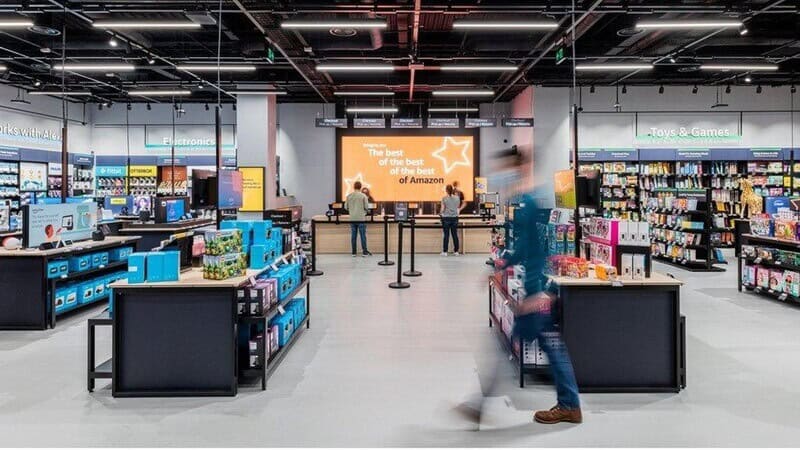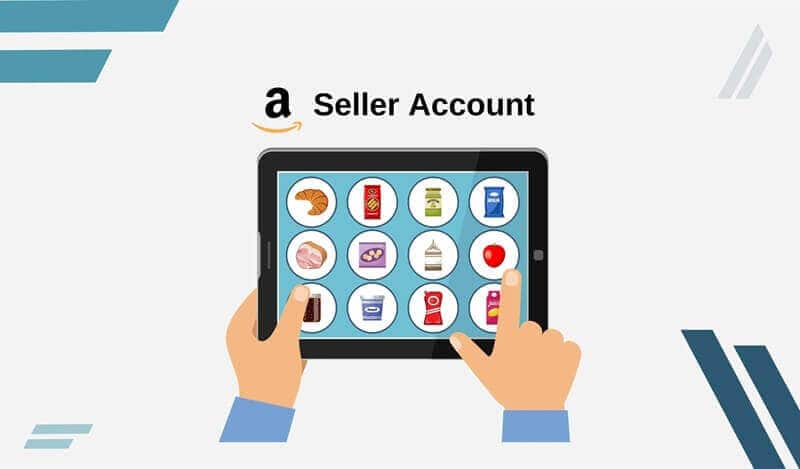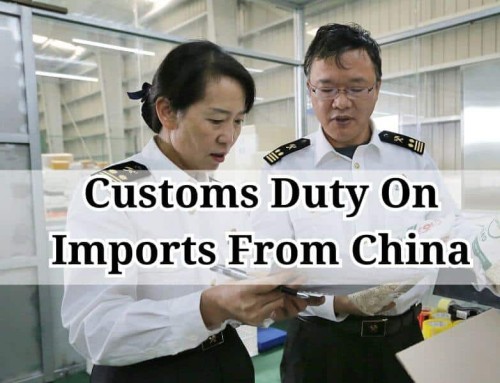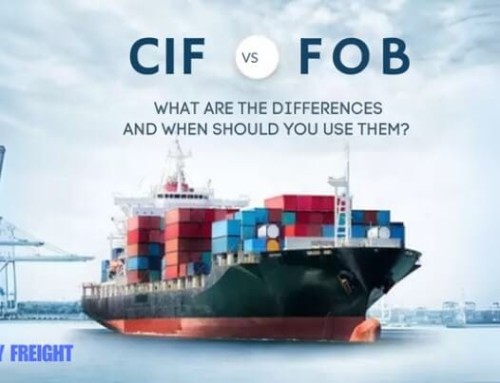How to Sell on Amazon UK: A Comprehensive Guide
Amazon UK ranks among the leading online marketplaces having over 400 million visits every month (source).
Out of thousands of sellers, one needs a focused approach to stand apart from others. Whether you are starting from scratch or scaling your business, knowing how to set up, optimize, and market your products is imperative.
This simple guide combines everything a user requires from creating an account to optimizing the listings. We covered everything you need to know to sell on Amazon.
Ready to turn your products into profits? Let’s dive in!
- Why Should You Sell on Amazon UK?
- Step-by-Step Guide to Setting Up Your Amazon UK Seller Account
- What Are Amazon UK’s Fees and Costs?
- How to Find the Right Products to Sell on Amazon UK?
- FBA or FBM: Which Fulfillment Method is Best for You?
- How to Market and Promote Your Products on Amazon UK?
- How to Stay Compliant with Amazon UK’s Policies?
- What Are the Common Challenges and How to Overcome Them?
- FAQs About Selling on Amazon UK
Why Should You Sell on Amazon UK?
Capitalizing on a Huge Customer Base
Amazon UK consists of millions of shoppers daily, which makes it one of the most visited marketplaces in the UK. Given Amazon captures 20% of all online retail spending in the UK, it is a place one would want to consider. Selling here provides an opportunity to cater to a vast number of customers actively searching for products such as yours.
A platform you can rely on to grow your business
Amazon UK has more than 281,000 active sellers, thus confirming that it is a trustworthy and lucrative platform for businesses. Aside from being the favorite of buyers, sellers also consider Amazon UK as a means to expand their brands and increase their revenue. Being part of this community means you are in good company.

Basic tools are available that cater to the seller’s needs
Amazon has made selling easy. Its Fulfilled by Amazon (FBA) program takes care of all the logistics, which include storing items, shipping them, and even dealing with customer care services. This allows you to put your attention to advertising and growing your business without much operational intricacies.
Take Advantage of the UK’s High Online Spending
People from the UK spend excessively when it comes to online shopping and only a few countries spend more. This offers a big market for your products. You have plenty of opportunities to succeed by selling types of books, beauty products, and fitness equipment that are in high demand, thus allowing you to establish a profitable niche.
Takes your business beyond borders
Selling on Amazon UK gives you access to buyers from across the world thanks to the connection of Amazon’s European marketplace, which allows your business to grow well beyond the borders of the UK. Rather, you are provided with the means to reach international buyers without the need to go through the hassle of opening stores in different regions.
Large and Active Customer Base: Around 86% of UK shoppers use Amazon, with 70% shopping at least once a month and 17% weekly (Frisbi).
High Seller Activity: Amazon UK has over 280,000 active sellers, making it the second-largest Amazon marketplace globally (Helium10).
Strong Fulfillment Network: Amazon operates 21 fulfillment centers in the UK, ensuring fast and efficient delivery for both sellers and buyers (Frisbi).
Dominant Market Share: Amazon accounts for 20% of total online retail sales in the UK, proving its strength in e-commerce (Helium10).
Relevant: amazon fba forwarder guide
Step-by-Step Guide to Setting Up Your Amazon UK Seller Account

Individual or Professional Plan: Which One Fits Your Business?
As a new seller on Amazon UK, you get to select one of the two selling plans.
Individual Plan: Most suitable for anyone expecting to sell less than 35 items in a month. There is no subscription fee, but a £0.75 fee is charged for each item sold along with other selling fees.
Professional Plan: This plan is for people expecting to sell in larger volumes. There is a subscription charge of £25 (VAT exempt) that is mandatory even if there are no sales, plus applicable selling fees.
Relevant: What documents are required to ship from China to Amazon?
Restrictions and Policies
- Product Categories: Many seller limits apply, some sponsored category approvals include (Beauty, Health, Grocery, etc.), while others do not permit certain products for sale like refurbished goods.
- Return Policies: For seasonal holidays, Amazon does have built-in additional return windows that can change inventory and restocking cost.
- Compliance: Sellers from Europe do have to comply with specific recycling guidelines for certain products.
What Do You Need to Register?
To register as a seller on Amazon UK, prepare the following:
Accounts for sellers on Amazon UK need the following to sign up:
- Business Email or Amazon Customer Account: Use a preexisting Amazon account or create a new one solely for business purposes.
- Valid ID (Passport or Driver’s License): ID verification to protect users,needs to prevent invalid or unverified account activity.
- VAT Number (if Given): Required only if your business is VAT registered and can be provided at a later date if not.
- Bank Account and Credit Card Information: International credit card and bank account that accepts deposits from Amazon.
How to Navigate Seller Central Like a Pro
Once registered, you will be in Seller Central, where all your sales management will take place. To begin:
Dashboard Overview: Get acquainted with the general dashboard where your sales, orders, and messages are monitored closely.
Inventory Management: Manage your listings, stock, and add products through the ‘Inventory’ section under the ‘Inventory’ tab.
Order Processing: View required customer orders, packing slips, and confirm orders and shipments in the customer’s ‘Orders’ section of your account.
Performance Metrics: The ‘Performance’ tab allows you to receive feedback and defect rates through customer orders and check compliance with Amazon standards, performance.
Reports and Payments: This section contains various business performance sales reports, payments summaries, and other advanced analytics.
Additional Considerations
- Product Restrictions: Study policies to make sure you follow directions before selling a certain product/category. You might be subject to waiting in order to gain approval before listing.
- Managing multiple seller accounts: as a general rule, it’s wise to avoid operating more than one seller account unless there is a genuine and legitimate business purpose that justifies it, in which case all Amazon terms have to be fully complied with.
What Are Amazon UK’s Fees and Costs?
Gaining access to a huge market is just a few clicks away with Amazon UK, a great opportunity for any business owner looking to expand.
It is important to keep in mind, however, that operating on Amazon UK comes with its own set of expenses.
These expenses range from fees involved with selling products to paying for associated services.
Breaking Down Selling Fees: Referral, FBA, and More
One of the most basic expenses is a referral fee, set as a percentage of the selling price for the product. Most categories of products have a fee that ranges from 8% to 15%, and items like books and media often have lower fees, while clothing and accessories have upper-limit fees.
For sellers of larger, heavy items, there is good news: the referral fee will be reduced from £25 to £20 beginning in 2025, providing sellers with added incentive to sell oversized items.

Another expense you need to consider is how to fulfill an order. Fulfillment by Amazon refers to the service where an order is fulfilled by Amazon and includes storage, shipment, and customer service. Unlike the other expenses, this is charged based on the weight and volume of the product.
Another major expense to consider is Fulfillment by Amazon (FBA). This service covers storage, shipping, and customer service, with fees based on product size and weight:
- Standard-size items are generally affordable for lightweight products.
- Oversized items now come with a simplified fee structure, reduced from 28 tiers to 17 categories. These updates make the fees easier to calculate and, in many cases, lower overall costs.
In addition, like many other services, storage for FBA in Amazon will have seasonal rates which will augment during the peak October to December period.
There is a charge for Aged inventory Surcharge which is levied for items stored in the Amazon warehouses for more than 241 days, so it becomes necessary to turn over your inventory rapidly.
When deciding on a selling plan, sellers can choose between two options. The Individual selling plan is designed with low-volume sellers in mind, charging just £0.75 per item sold and no monthly fee.
The Professional plan offered to higher-volume businesses, which costs £25, excluding VAT, per month, has many advantages, including bulk listings and other advanced selling features.
Relevant: How to ship from alibaba to Amazon
Additional Costs You Need to Know
Apart from the referral and FBA fees mentioned, there are other fees that, when combined, may cause your bottom line to be affected. These fees include, but are not limited to the following:
- Advertising Fees: Sponsored Products and other Amazon PPC advertising services will certainly put your products in the forefront. But if not controlled, these expenses can quickly escalate.
- High-Volume Listing Fees: Businesses that have more than two million active listings will have to pay this small fee of £0.0003/item.
- Refund Administration Fees: Amazon uses this term to describe the fee associated with processing a customer requested refund.
- Storage Surcharges: This is relevant for those slow-moving or surplus items, particularly during peak storage time.
For the year 2025, Amazon plans to introduce new incentives which encompass fee reductions for sellers who make their inventory more diverse. There are also revisions to the “Small and Light” program, which should offer more set pricing for affordable, small, light items.
How to Minimize Costs and Maximize Profits
Improved inventory controls: Keep track of stock levels to avoid paying long-term storage costs. Move items that are not selling, with the use of discounts or promotional offers.
Evaluate Selling Plans: Evaluate your sales volume and determine the best priced plan. If you have a sale volume of more than 35 per month, the Pro plan would be best.
FBA and FBM selling methods: Check the costs of using Amazon’s FBA service versus doing FBM yourself. There are advantages to using FBA like Prime service, but weigh the costs against fee income.
Check advertising spend: If you use Amazon’s ads, spend some time monitoring their ROI. Make sure you are getting returns greater than what you are spending on advertising.
How to Find the Right Products to Sell on Amazon UK
Choosing the right products can tremendously impact your success on Amazon UK. Follow these steps to spot the profitable opportunities:
What Are the Most Profitable Niches?
Everything comes down to particular niches that are in demand but are not very congested. Here are some of the best performing categories:
Pet Supplies. Undoubtedly, the pet products market is one of the largest and most competitive. Considering it grows every year, the profit potential is lucrative.
Beauty Products: Items like skincare and cosmetics are popular among consumers, often yielding high earnings.
Electronics. Gadgets and miscellaneous accessories always remain in vogue, but there can be an avalanche of competition.
Where to Source Your Products: Manufacturers, Wholesalers, or Private Label?
Every sourcing method serves a purpose and a specific audience. Check the tips below that best match your business model and goals:
- Manufacturers: Directly working with manufacturers may result in reduced pricing and more flexibility in terms of product offerings. Use Alibaba to find overseas manufacturers.
- Wholesalers: Buying from wholesalers means that you can buy large amounts of the product without the need for setting up a manufacturing facility. This option works best for sellers looking for products that are already performing in the market.
- Private Label: You can establish your own brand using Private Labeling and earn brand profits and control. With this option also comes more investment for marketing the product, which will give you the desired results.
FBA or FBM: Which Fulfillment Method is Best for You?
| Factor | FBA (Fulfillment by Amazon) | FBM (Fulfillment by Merchant) |
|---|---|---|
| Cost | Higher due to storage, pick-and-pack, and fulfillment fees. | Lower as you handle storage and shipping yourself. |
| Control | Limited as Amazon manages inventory and customer interactions. | Full control over inventory, packaging, and shipping. |
| Scalability | Easily scalable with Amazon’s infrastructure supporting high volume. | Requires manual effort and resources to scale. |
| Customer Service | Amazon handles returns, refunds, and 24/7 support. | You manage all customer service tasks. |
| Storage | Access to Amazon’s vast warehouse network but incurs fees. | Requires your own storage space, offering flexibility. |
| Shipping & Prime | Amazon ships orders and provides Prime eligibility. | You handle shipping; no Prime access. |
NOTE: FBA is best for sellers who want Prime benefits and hands-off logistics, while FBM is ideal for those seeking cost control and direct customer management.
How to Market and Promote Your Products on Amazon UK?

- Increase your visibility and designate specific audiences through Amazon Ads.
- Make the product titles engaging and keywords relevant for the optimization of the product listing.
- Use social media for the purpose of driving traffic on your Amazon store.
- Motivate rapid purchases by running time-capped promotions.
- Get honest reviews from customers that were satisfied with your service or product.
- Expand your base audience by providing discounts to repeat buyers.
- Clearly demonstrate the value of the product by displaying images and descriptions.
- Refine your strategies with the help of Amazon Brand Analytics by tracking them.
Relevant: What is the Cost of Shipping from China to Amazon FBA Warehouses?
How to Stay Compliant with Amazon UK’s Policies?
Abide by The Listing Policy: Represent the product accurately and use the correct category.
Ensure Quality Control: Inaccurate and prohibited items can lead to suspensions, so do not sell them.
Follow The Pricing Policies: No unfair competition or price gouging is permitted.
Follow The VAT Guidelines: If applicable, register and charge VAT as required.
Be Proactive with Customer Service: Solve the problems and handle the returns in a timely manner.
Check Account Health Regularly: Maintain order defect rates, late shipments, and feedback scores within Amazon’s limits.
Be Cautious About Policy Changes: Avoid penalties by refreshing yourself routinely with Amazon seller policies.
What Are the Common Challenges and How to Overcome Them?
Like any marketplace, selling on Amazon UK comes with its unique difficulties to overcome. The competition is rather stifling because many sellers offer the same goods. So, to get an edge over the competition, a seller must work on their product images and descriptions while incorporating keywords that get the attention of shoppers.
It is not easy to compete with other sellers and not lose profit at the same time. Frequently change your analysis of other sellers and their offers while employing dynamic pricing in order not to lose profit.
Another challenge is the management of controllable goods, which is rather complicated. Overstocking leads to high storage fees, which are then offset with understocking where sales would be lost. Amazon Seller Central can be used to track stock levels through challenging sales periods and predict demand through effective monitoring.
In the long run, customer satisfaction will make or break you as the seller. Make sure to let queries come to you, and complaints get resolved at expert levels set up in your system, to order to receive a positive customer feedback. Friendly service is tactical and improves seller score and trust.
FAQs About Selling on Amazon UK
Do I have to register a business to sell on Amazon UK?
No, you can sell as an individual as long as you do not have a business. It might be necessary to register a business and obtain a VAT number for greater sales volumes, though.
Can I sell on Amazon UK from a different country?
Yes, overseas sellers can also register. Keep in mind that a UK bank account, tax compliance, and strategy for shipping may be necessary.
Is a VAT registration required to sell on Amazon UK?
Yes, if your annual sales currently sit at or over £90,000, VAT registration becomes necessary. Even some categories under £90,000 may sometimes require VAT, too.
What is the best approach to shipping?
If you are using FBM, you will take care of shipping yourself. Make sure to use good carriers that allow you to give tracking information, ship the orders within the time frame, and generally handle your shipments properly. Alternatively, use FBA and allow Amazon to handle shipping.
How do I make my products rank higher on Amazon UK?
Improve the listing to include keywords and make sure to add fulfilling images and bullet points. Also, promote the products using Amazon Advertising and have great seller metrics.
Is it possible to switch between Individual and Professional selling plans?
Yes, as long as you do it based on sales volume, there really is no restriction.
Choose Winsky Freight for Your Amazon UK FBA Program
Chinese products are among the top selling products on Amazon UK. So, if you are planning to do business, Chinese products can bring you the highest profits.
Winsky freight has been serving Amazon sellers in the UK for over a decade. Our experts take all the responsibilities from taking your product from the manufacturer to sending it to the Amazon warehouse.
Got any questions? Reach outto us and one of our experts will contact you ASAP.



Leave A Comment